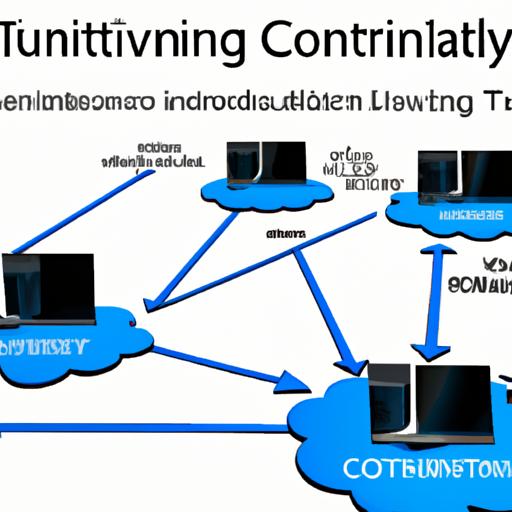Benefits of Multi-Tenancy in Cloud Computing
Cost-effectiveness
In the realm of cloud computing, multi-tenancy offers a cost-effective solution that allows multiple users or “tenants” to share resources within the same environment. By sharing resources such as servers, storage, and networking infrastructure, organizations can significantly reduce their operational costs. This shared model eliminates the need for individual hardware investments and maintenance, resulting in substantial savings for businesses of all sizes.
Scalability
One of the key advantages of multi-tenancy in cloud computing is its inherent scalability. With the ability to dynamically allocate resources based on demand, multi-tenancy enables organizations to easily scale their operations up or down without the need for extensive infrastructure changes. This flexibility ensures that businesses can adapt to changing market conditions and effectively meet the needs of their users without incurring unnecessary costs or downtime.
Efficiency
By consolidating resources and optimizing utilization, multi-tenancy enhances the overall efficiency of cloud computing environments. With shared resources and streamlined operations, organizations can achieve higher levels of productivity and performance. This efficiency not only improves the user experience but also enables businesses to achieve their goals more effectively and drive innovation within their industries.
Challenges of Implementing Multi-Tenancy
Security Concerns
When it comes to multi-tenancy in cloud computing, one of the primary concerns that arise is the security of data. With multiple tenants sharing the same resources and infrastructure, there is always a risk of data breaches or unauthorized access. Ensuring robust security measures, such as encryption, access controls, and regular security audits, is crucial to mitigate these risks and protect sensitive information.
Performance Issues
Another challenge of implementing multi-tenancy in cloud computing is the potential impact on performance. As multiple tenants access and utilize the same resources, there may be instances of resource contention leading to slower performance or bottlenecks. To address this issue, cloud providers need to implement efficient resource allocation strategies, load balancing mechanisms, and performance monitoring tools to ensure optimal performance for all tenants.
Data Isolation
Maintaining data isolation is essential in a multi-tenant environment to prevent data leakage and ensure data privacy and compliance. Each tenant’s data must be securely segregated and isolated from other tenants to avoid any unauthorized access or data corruption. Implementing strong data isolation measures, such as virtualization, containerization, and network segmentation, is key to safeguarding data integrity and maintaining trust with tenants.
Best Practices for Implementing Multi-Tenancy
Segregation of Resources
When implementing multi-tenancy in cloud computing, one of the key best practices is the segregation of resources. By separating resources for each tenant, you can ensure that there is no interference between different tenants, maintaining data privacy and security. This segregation also helps in optimizing resource allocation and preventing performance issues that may arise from resource contention.
Role-Based Access Control
Another crucial best practice for implementing multi-tenancy is role-based access control. By assigning specific roles and permissions to different users within each tenant, you can control access to resources and data. This granular control ensures that only authorized users can access certain resources, reducing the risk of unauthorized access and data breaches. Role-based access control also helps in maintaining compliance with regulations and industry standards.
Monitoring and Tracking
Monitoring and tracking are essential components of implementing multi-tenancy in cloud computing. By regularly monitoring the usage and performance of resources for each tenant, you can identify any anomalies or issues that may arise. This proactive approach allows you to address potential problems before they escalate, ensuring smooth operations and optimal performance for all tenants. Additionally, tracking resource usage helps in identifying trends and patterns, enabling you to optimize resource allocation and make informed decisions for future scalability.
Case Studies of Successful Multi-Tenancy Implementations
Amazon Web Services
Amazon Web Services (AWS) is one of the leading cloud service providers known for its robust multi-tenancy implementation. By efficiently sharing resources among multiple users, AWS ensures cost-effectiveness and scalability. With a wide range of services and a strong focus on security, AWS has set a benchmark for successful multi-tenancy in cloud computing.
Microsoft Azure
Microsoft Azure is another key player in the cloud computing industry that excels in multi-tenancy implementations. Azure’s flexible and secure architecture allows for seamless sharing of resources while maintaining data isolation and performance. With a wide global presence and a range of services, Azure has proven to be a reliable choice for organizations looking to leverage multi-tenancy benefits.
Google Cloud Platform
Google Cloud Platform (GCP) is renowned for its innovative approach to multi-tenancy in cloud computing. GCP’s advanced resource management and strong security measures ensure efficient resource utilization and data protection. With a focus on performance optimization and scalability, GCP stands out as a successful case study of multi-tenancy implementation in the cloud industry.
Conclusion
In conclusion, multi-tenancy in cloud computing is a pivotal concept that revolutionizes resource management and efficiency in the digital landscape. By allowing multiple users to share the same resources while maintaining data isolation and security, multi-tenancy optimizes resource utilization and fosters cost-effectiveness. As organizations continue to embrace cloud computing for its scalability and flexibility, the implementation of multi-tenancy becomes increasingly crucial.
Looking ahead, the future of multi-tenancy in cloud computing holds promising developments. With advancements in technology and security measures, the challenges associated with implementing multi-tenancy are being addressed effectively. As cloud service providers enhance their offerings to accommodate the diverse needs of users, the benefits of multi-tenancy will continue to drive innovation and growth in the digital realm. Embracing the potential of multi-tenancy is not just a strategic move but a necessity in today’s dynamic and competitive business environment.



